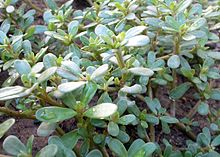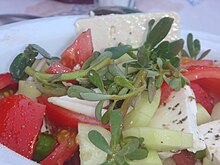The following interpretation reflect both original and evolving insights about [Permaculture] ethics. Hopefully they can be seen as contributing to a progressive deepening of our shared understanding of these core beliefs rather than the first or last word on the subject.
Permaculture's Three Ethics
Care of the Earth
The condition of the soil under our feet, and our stewardship, is the best measure of how we are managing.
Care of People
The true wellbeing of ourselves, our kin and community is the best indicator of how we are going.
Fair Share
Celebrate nature’s abundance,
Accept her limits and
Distribute the surplus.
get you head around both, at the same time.
Applying Design Principles to Activism:
Using design principles to frame and choose aphorisms for the next generation of practitioners, teachers and activists
Design Principles are very powerful thinking tools that we can use well beyond the garden and the farm. We can test our understanding of them, by applying them to familiar subjects where we have substantial experience and gut feelings about what’s appropriate and what’s not. If we can make the match when we are on solid ground, then we have a better chance of using these thinking tools in novel situations when the ground shifts. In the process we learn how to better articulate the principles in ways that make common sense.
Twelve design Principles
Observe and Interact
Network for inspiration and information but don’t get mesmerised by distant greener pastures.
Read the social landscape to understand the constantly changing context for our actions.
Talk to others doing similar and related stuff; no matter what the label or the looks.
Find out who has done this before; where it worked and where it didn’t.
Failure is a gift; so long as we learn.
We have a lineage and a history; make it a story to tell.
Catch and Store Energy
Plant seeds that can thrive, reproduce, and provide a welcome inheritance for future generations.
Build skills that will be exchangeable in an energy descent world.
Aquire quality tools of trade, that will one day be heirlooms.
Don’t be too concerned with accumulating stuff, titles or money (it all deteriorates with time or disappears in a puff of smoke).
Your mind, body and soul are stores of real wealth; draw on them when nurturing the next generation.
Obtain a Yield
Competition is part of the process by which nature maintains health and vigour; accept that competition between ideas and actions is healthy in pioneering systems.
Look for the freebees that others can’t see.
Cut a dealwith those who have the stuff, titles or money; it cheaper to use than to own .
Do It Yourself; kick starting the household economy today.
Be a jack of all trades (that is, diversity), but a master of one ( that is, obtain a yield)
Be numerate when it counts but don’t be penny wise and pound foolish.
Don’t fear success.
Apply Self Regulation & Accept Feedback
Be a responsible producer rather than a dependent consumer.
Produce something with utility and soul; kick start the gift economy.
Be your own boss; don’t rely on parents, peers or the state to keep you on the straight and narrow.
Over reach and burnout occur when there is no off switch.
Acknowledge and work within your limits; don’t bite off more than you can chew.
Let babies and kids take real risks in discovery and growth.
Everything has a shadow; remain sensitive to the downsides of even the best ideas and action.
Be prepared to change course, based on the evidence and ethics.
Use and value Renewable Resources and Services
Get down and dirty; learn to live from what’s abundant and reproducing.
Use and value Skills & Sweat in preference to Gear & Fuel.
Take Life as part of living; with thanks.
Shit happens; accept that no one is in control.
Appreciate fossil life (fuels) as a gift from Gaia; use it wisely.
Produce No Waste
Respect and maintain what we already have, rather than dumping it for the next shiny toy.
Be frugal and efficient in everything, from personal movement to cutting things into smaller pieces .
Noise is an unused output, think before you speak.
Deal with conflicts, before they blow up.
Health maintenance avoids wasting life.
Use it, rather than, lose it.
Design from Patterns To Details
Stand back and take in the big picture before diving in.
Understand all the forces at work, not just the obvious actors.
Use the cycle of the seasons and the stages of life as templates for action.
Once the pattern is clear; go with the flow, stay flexible and open to what might be the missing parts of the puzzle.
Recognise the partial truth in both the conspiracy and the cock-up theories of history.
Integrate Rather Than Segregate
Look for the broken or missing connections that give win-win outcomes.
Accept that we can’t do everything; find partners, collaborators and colleagues.
Accept the need for ambiguous compromises and trade offs when the synergies aren’t perfect.
Politics is the art of the possible.
When times get tough, remember strength in numbers.
Use Small and Slow Solutions
Redefine success as contentment rather than desire.
Replicate rather than grow as a default strategy for responding to success.
Make the smallest change necessary; consider doing nothing.
Get grounded; the future is local.
Find the asymmetric balance between the common and the novel; appreciate the modesty of the common while we taste the fruits of novelty.
Use and Value Diversity
Nature never does anything uselessly; learn the utility.
Always consider an insurance policy and a backup plan.
Locate savings in different places and currencies.
Look for the multiple benefits in any action.
There is more than one way to skin a cat; don’t be dogmatic about the best way.
Use Edges and Value the Marginal
In the soil and life, the interface is everything, learn how to work with more and more.
It might take a big majority to change a big system, but it only takes a minority to do well at the edge, to start a runaway change.
Acceptance of the marginal species, persons and places is prudent; one day you might need them.
Avoid being a moth around the bright lights.
We live at the edge between worlds; make the most of it while it lasts.
Creatively Use and Respond To Change
Play god in small ways, making the necessary changes for a greater good.
Trigger small events we can’t control; be ready for surprises.
Take advantage of crisis (personal or societal) to get acceptance of change.
When shit happens, we want someone to blame; it doesn’t help.
Nature looks quiet for periods but changes fast when in full flight; look for the signs on the sleeping maiden’s face.
Keep an eye on the horizon for king waves; get out of the water fast.
King Canute couldn’t stop the waves; but he could have tried surfing.
Read original blog post
















